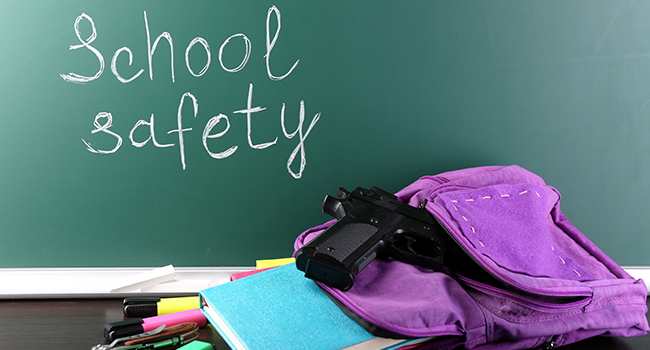
Arkansas School Safety Commission Issues Final Report
Each of the Arkansas School Safety Commission’s recommendations is categorized under mental health and prevention, law enforcement and security, audits, emergency operation plans and drills, intelligence and communication, or physical security.
- By Jessica Davis
- December 06, 2018
The Arkansas School Safety Commission released its final report Monday, comprised of 30 recommendations on how campuses can work to avoid and respond to incidents of mass shootings. The school safety panel was created by Gov. Asa Hutchinson in March following the Parkland, Fla., school shooting in which 17 people were killed.
Each of the Arkansas School Safety Commission’s recommendations is categorized under mental health and prevention, law enforcement and security, audits, emergency operation plans and drills, intelligence and communication, or physical security.
Hutchinson said he believed it was the most comprehensive school study safety that has been conducted in the United States.
"This is comprehensive in its breadth,” Hutchinson said. “It’s comprehensive in its recommendations and I already know that it has had a very significant impact on our local school districts in terms of enhanced safety, but I also believe that this will be followed very closely by other states.”
Some of the panel’s suggestions include the following:
- All school districts should establish a behavioral threat assessment team and process.
- No campus should ever be without an armed presence when staff and children are attending class or a major extra-curricular activity.
- If a school district authorized the use of the CSSO program, that policies, protocols, training, and selection go above the minimum standards required, to include standard psychological exams, random drug screening, extensive firearms handling training, and regular training with law enforcement.
- Schools should modify their fire drills to include additional time for the teacher to evaluate the situations by looking, listening and observing prior to evacuating their classrooms.
- Students, staff and parents should be educated on how to recognize and report signs of at-risk behavior and potential threats.
- State agencies should work with the federal Readiness and Emergency Management (REMS) for Schools Center Training Assistance Office, to develop a customized, state-level school bus safety initiative for use by districts, schools and transportation offices.
"I hope that we’ll be able to see a year from now, first of all that there not be any incidents in Arkansas. That would be a real answer to prayer, but also because of security initiatives," Hutchinson said. "I do believe anytime that you initiate something like this that it needs to be reviewed. This is something that our Department of Education can review and to see the measure of implementation on the security measures and whether there is any additional gaps that we need to address in the future."
About the Author
Jessica Davis is the Associate Content Editor for 1105 Media.